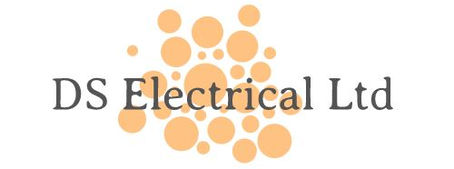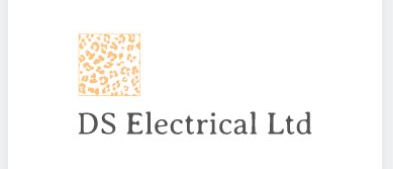




I first got involved with DS Electrical Ltd to help improve their logo. They wanted a simple design, specific colors, etc.
My logo design process ;
Design Brief
Get to know the client’s business.
I was lucky and it save me a lot of time in the discovery phase – because the business was my brother inlaws venture, I knew alot about the business, its journey and goals.
Otherwise, I would need to a series of branding questions, prior to starting developing a logo.
The basic questions:
-
What distinguishes your company from peers in your field?
-
What are your business and marketing goals?
-
Where are you going in the future?
-
Describe your business.
5. any additional questions e.g.
Research
Conduct research focused on the industry, its history, and competitors.
Time to start with the research, research the industry, it’s history, and the competitors. What can work and what’s appropriate and foremost how to differentiate the company from local competitors. I look at other similar business in the area as well as globally, to see whats trending and what innovative designs i can be inspired by.
Brainstorming
Conceptualize ideas and make decisions on the possible design directions. i spend a lot of time looking at my collection of images and inspirations


Sketching
Develop the logo design concepts around the brief and research. I sketch a lot by hand on the bus, at lunch, etc
Pencil on paper - I think it is called , intuitive exploration of conceptual design solutions.
Design Execution
Select promising logo design concepts and execute them digitally.

Presentation
Present logo designs concepts in context of applications relevant to the client. So i created some simple mock-ups on name cards, letter heads, etc
Revisions / Approval
Making changes if necessary. Together with the client arrive on the best images/concepts.Sometimes the client is unsure about a new concept I like to put the idea out on behance or facebook groups to get feedback from different perspectives.
Delivery
Deliver the final logo artwork and identity guidelines.





Client brief
to create a site on WIX , keeping inline with new logo
colors orange & greys
Creating a webpage for a client on wix.com
It is a very responsive site and I can see why it is popular, I have also noticed they give you the option to code the website yourself, I will try that at some point but for now we will work on my brother-in-law's website, it took me an hours to put together a generic page and he then had a quick look and didn't like the fonts used and some of the wireframing
so I worked on showing a few different fonts and then we worked on the info page and what it contained, as I dont really speak electrician - I had to do a bit of research.
We looked at a few different theme that were available and I mixed and matched, changed color schemes and came up with a page that matched his brief but also as we went through the process i realized there was more than just that simple briefing.
The site required room for lots of images as well as an option to set up a blog not to mention the logo was going to change...

I'll update the page as soon as anymore changes are made
UPDATE:
Using wix.com
So there is quite a few tools and elements that make the Wix Editor pretty great. I kinda understand the functions of the different bars. It also has quite an intuitive workflow. You can add images to a gallery or just upload an individual image. It lets you customize the gallery outline to match your overall site design and there is a large selection of gallery layouts to play with.
Whilst editing the page it also let me adjust the way the pages look.
I am attempting to use the editor but it seems the internet service is not playing today so I will have to end it here.
I will be back!!
-
Goal identification: Where I work with the client to determine what goals the site needs to fulfill. I.e., what its purpose is.
-
Scope definition: Once we know the site's goals, we can define the scope of the project. I.e., what pages and features the site requires to fulfill the goal, and the timeline for building those out.
-
Sitemap and wireframe creation: With the scope well-defined, we can start digging into the sitemap, defining how the content and features we defined in scope definition will interrelate.
-
Content creation: Now that we have a bigger picture of the site in mind, we can start creating content for the individual pages, always keeping search engine optimization in mind to help keep pages focused on a single topic. It's vital that you have real content to work with for our next stage:
-
Visual elements: With the site architecture and some content in place, we can start working on the visual brand. Depending on the client, this may already be well-defined, but you might also be defining the visual style from the ground up. Tools like style tiles, moodboards, and element collages can help with this process.
-
Testing: By now, you've got all your pages and defined how they display to the site visitor, so it's time to make sure it all works. Combine manual browsing of the site on a variety of devices with automated site crawlers to identify everything from user experience issues to simple broken links.
-
Launch! Once everything's working beautifully, it's time to plan and execute your site launch! This should include planning both launch timing and communication strategies — i.e., when will you launch and how will you let the world know? After that, it's time to break out the bubbly.
Website design - My process

Social Media Marketing




-
Set Goals: The very first step in your Facebook marketing strategy should be to set goals. ...
-
Pinpoint Target Audience: Facebook marketing is useless if you aren't reaching the right people. ...
-
Set Your Budget: ...
-
Plan engaging content: ...
-
Plan equally engaging ads: ...
-
Monitor daily: ...
-
A/B Split Test:

So we have run a few video campaigns, flyers, T-shirts, sponsership, etc .. and plan for
an email distribution strategy as well.























